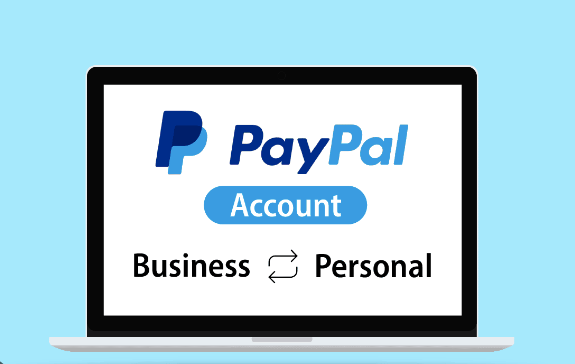Difference Between Your Personal PayPal and Business PayPal Accounts?

When you’re running a business, it’s important to keep your personal and professional lives separate. That might sound like a no-brainer, but if you’re anything like me, you probably have a lot going on at once. I’m sure you’ve heard of PayPal before—it’s the most popular online payment processor and arguably the best way to accept online payments for your business. But did you know that there are actually two different types of PayPal accounts? One is for personal use and one is specifically designed for small businesses. So what are the differences between them? Let’s take a closer look!
You see the wrong business PayPal account and get written up for it.
The most common mistake people make is using the wrong account. This can result in a fine, so it’s important to be aware of which account you’re using and why.
If you’re just starting out as a freelancer or small business owner, it can be confusing at first trying to keep track of all your finances–especially if you have multiple bank accounts open at once! If this sounds like something that might apply to you (or if it does apply), then here are some tips for avoiding common pitfalls:
- Use personal PayPal for personal transactions only. It should never be used for business transactions because it won’t offer protection against fraud or chargebacks like Business PayPal does; therefore, there would be no way for them
You can’t manage your personal portfolio on a business PayPal account.
If you’re a business owner, you can’t manage your personal portfolio on a business PayPal account. If you want to transfer money from one account to another, or even just check up on how much money is in each of them, it’s not possible through the platform itself. Instead, go through your bank’s website first and then initiate the transaction from there (it will say “transfer funds” when clicking on either linked account).
Your business bank account can be linked to only one PayPal account at a time.
You can only link one PayPal account to one bank account at any given time. If you need more than one PayPal account, then you will need to open multiple bank accounts.
This is important because if the business owner has been using their personal bank account for their business, they should make sure that all transactions are being recorded on the proper accounts so that it doesn’t get confusing later on when tax time comes around!
In order to transfer money from one account to another, you need to go through your bank’s website first and then initiate the transaction from there.
This is a common question, and the answer is yes. You can transfer money from one account to another. But there’s a catch: you need to go through your bank’s website first and then initiate the transaction from there. You can’t do it directly on PayPal.
If this sounds confusing, don’t worry–we’ll walk through it step by step!
- Log in with your username and password at www. paypal-personal/business. If you’re having trouble logging in, please see our guide on how to fix login issues . If everything checks out fine but nothing happens when pressing “Log In” or “Sign Up,” try refreshing the page first before leaving feedback below this article so we know which browser version works best for future readers who may be experiencing similar problems as well!
You should create separate bank accounts for your personal and business funds if possible, especially if you receive payments from clients on a regular basis.
If you’re a business owner and receive payments from clients on a regular basis, it’s best to separate your personal and business bank accounts. This way, your personal funds can’t be used in case of a dispute or legal issue with one of the companies that you run.
If you run multiple businesses, it’s also wise to keep them separate–especially if they have different tax statuses (like sole proprietorship versus C corporation).
Any company that accepts payment through PayPal has an option to add a line item fee (a percentage of the total transaction).
A line item fee is a percentage of the total transaction that you can add to your invoice. If you don’t set up a line item fee, then your customers won’t be able to pay via PayPal and will have to use another payment method like credit card or bank transfer instead.
Set up a line item fee by going into your account settings, clicking on “Preferences,” then choosing “Add New Fee” from the dropdown menu under “Fees.” You’ll then see a screen where you can enter information about what type of payment method this new charge applies to (i.e., shipping or taxes). Finally, click Save Changes when finished!
If you have multiple businesses or run any kind of side hustle, then setting up separate accounts will help keep things organised
If you have multiple businesses or run any kind of side hustle, then setting up separate accounts will help keep things organized. Businesses should be kept separate from personal accounts and vice versa.
The reason for this is because PayPal business accounts cannot be linked to personal ones and vice versa. If they were linked together, then it would cause confusion when paying for goods or services online with your PayPal account.
Conclusion
As you can see, there are many benefits to having separate PayPal accounts for personal and business use. While it’s possible to use one account for both purposes, doing so can lead to problems down the road if you aren’t careful about how much time is spent managing each one separately. If at all possible, create separate bank accounts for each type of transaction–this will help keep things organised and ensure that no mistakes are made when transferring funds between them!